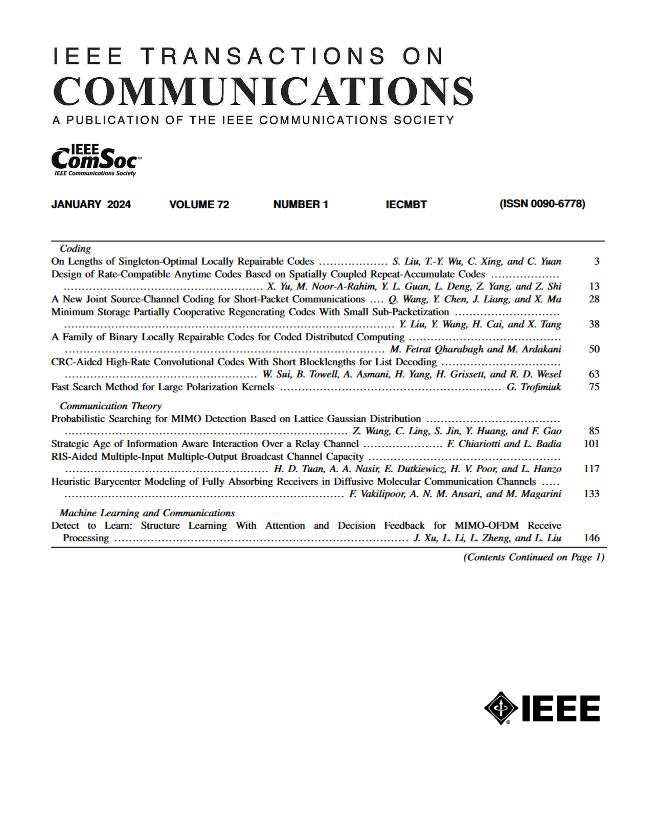d2d辅助协同NOMA系统的能力增强
IF 8.3
2区 计算机科学
Q1 ENGINEERING, ELECTRICAL & ELECTRONIC
引用次数: 0
摘要
本文提出了一种新的设备到设备(D2D)辅助的协作非正交多址(NOMA)两级传输模型,该模型包括:1)从发射机到中继节点的部分解码和转发;2)中继节点到接收机的传输。提出了一个和速率最大化问题,并将其解耦为子信道选择和两级信道链路功率分配。提出了一种基于博弈论和连续凸逼近(JOAGS)的联合优化算法,可以有效地利用网络资源,提高频谱效率。仿真结果验证了本文算法的有效性,证明了该算法在放大系统容量、降低通信链路中断概率、延长通信距离等方面具有较强的能力。结果表明,与现有方案相比,系统的和率提高了10.8%,中断概率显著降低了23.6%。本文章由计算机程序翻译,如有差异,请以英文原文为准。
Capacity Enhancement for D2D-Assisted Cooperative NOMA Systems
In this paper, a novel device-to-device (D2D)-assisted cooperative non-orthogonal multiple access (NOMA) model with a two-stage transmission scenario is proposed, which consists of 1) partial decoding and forwarding from the transmitter to relay nodes; 2) transmission from relay nodes to the receivers. A sum-rate maximization problem is formulated, which is decoupled into subchannel selection and two-stage channel link power allocation. A joint optimization algorithm based on game theory and successive convex approximation (JOAGS) is proposed, which can efficiently utilize network resources and increase spectrum efficiency. The algorithm proposed in this paper has been validated through simulation results, demonstrating its substantial capability to amplify system capacity, diminish the outage probability of the communication link, and extend the communication distance. The findings reveal that when compared to the existing scheme, the system’s sum-rate is augmented by 10.8%, and the outage probability registers a notable reduction of 23.6%.
求助全文
通过发布文献求助,成功后即可免费获取论文全文。
去求助
来源期刊

IEEE Transactions on Communications
工程技术-电信学
CiteScore
16.10
自引率
8.40%
发文量
528
审稿时长
4.1 months
期刊介绍:
The IEEE Transactions on Communications is dedicated to publishing high-quality manuscripts that showcase advancements in the state-of-the-art of telecommunications. Our scope encompasses all aspects of telecommunications, including telephone, telegraphy, facsimile, and television, facilitated by electromagnetic propagation methods such as radio, wire, aerial, underground, coaxial, and submarine cables, as well as waveguides, communication satellites, and lasers. We cover telecommunications in various settings, including marine, aeronautical, space, and fixed station services, addressing topics such as repeaters, radio relaying, signal storage, regeneration, error detection and correction, multiplexing, carrier techniques, communication switching systems, data communications, and communication theory. Join us in advancing the field of telecommunications through groundbreaking research and innovation.
 求助内容:
求助内容: 应助结果提醒方式:
应助结果提醒方式:


